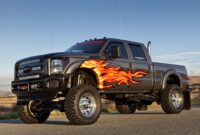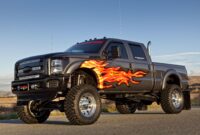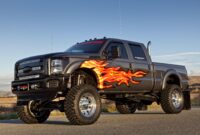Heavy Haul Truck Loads: Navigating the Giants of the Road sale.truckstrend.com
In the vast landscape of logistics, where goods of all shapes and sizes traverse continents, there exists a specialized niche that commands respect, precision, and an exceptional degree of expertise: Heavy Haul Truck Loads. Far from the standard freight operations, heavy haul involves the transportation of cargo that exceeds the conventional legal limits for weight, width, height, or length. These colossal shipments – ranging from massive industrial machinery and wind turbine components to pre-fabricated bridge sections and oversized pressure vessels – are the lifeblood of major infrastructure projects, energy initiatives, and industrial development worldwide. Without the intricate dance of heavy haul logistics, much of our modern world, from towering skyscrapers to vast power grids, simply wouldn’t exist. It’s a field where engineering prowess meets logistical mastery, ensuring that even the most daunting loads reach their destination safely, efficiently, and compliantly.
What Defines a Heavy Haul Load?
Heavy Haul Truck Loads: Navigating the Giants of the Road
At its core, a heavy haul load is any cargo that surpasses the standard dimensions or weight limits imposed by state and federal regulations. While specific thresholds vary by jurisdiction, a load typically qualifies as "oversized" if it exceeds 8 feet 6 inches in width, 13 feet 6 inches in height, or 53 feet in length (though tractor-trailer combinations can be longer). An "overweight" load generally refers to cargo exceeding the gross vehicle weight rating (GVWR) of around 80,000 pounds for a standard five-axle truck.
However, heavy haul often deals with far more extreme figures. We’re talking about loads that might be 20 feet wide, 18 feet tall, 100 feet long, and weigh hundreds of thousands of pounds, sometimes even over a million. These are not merely large items; they are engineering marvels in themselves, requiring a fundamentally different approach to transportation than standard freight. The legal distinctions between oversized and overweight are crucial, as they dictate the type of permits required, the specific routing, and the need for specialized equipment and escorts.
The Specialized Fleet: Equipment for Heavy Haul
Moving these monumental loads necessitates a fleet of highly specialized equipment, far more robust and adaptable than conventional trucks and trailers. This is where the ingenuity of heavy haul engineering truly shines.
- Tractors (Power Units): These are not your average semi-trucks. Heavy haul tractors boast significantly higher horsepower (often 600 HP or more) and multiple axles (e.g., 6×4, 8×4, or even 10×4 configurations) to distribute immense weight and provide superior traction and braking capabilities. Some operations utilize "push-pull" configurations, with one tractor pulling and another pushing from the rear, especially on steep grades.
- Trailers: The backbone of heavy haul, these trailers are engineered for extreme capacities and adaptability.
- Lowboys/Removable Gooseneck (RGN) Trailers: Ideal for tall machinery, RGNs feature a detachable front section that allows the trailer deck to lower to the ground, enabling drive-on/drive-off loading. Their low deck height ensures maximum overhead clearance.
- Multi-Axle Trailers: These are modular systems designed to distribute massive weights over many axles, reducing the load per tire on the road surface. Hydraulic platform trailers (like Goldhofer or Scheuerle models) can have dozens of steerable axles, often linked together to form custom configurations that can carry hundreds of tons. They offer hydraulic suspension for leveling and obstacle clearance.
- Extendable Trailers: For exceptionally long cargo (e.g., wind turbine blades), these trailers can extend their length significantly, ensuring proper support along the entire load.
- Step-Deck Trailers: While not as specialized as lowboys, step-decks offer a lower main deck than flatbeds, providing more vertical clearance for loads that are tall but not excessively so.

- Specialized Accessories: Beyond the main vehicles, specialized equipment like heavy-duty winches, custom rigging, dunnage (wood or other materials used to support and protect cargo), and advanced securement devices (chains, binders, specialized straps) are critical for safe loading, secure transit, and efficient unloading.

The Intricate Process: Planning and Execution of Heavy Haul
Transporting a heavy haul load is a complex logistical ballet, requiring meticulous planning, rigorous adherence to regulations, and flawless execution.
- Permitting & Regulations: This is arguably the most critical and time-consuming phase. Every state and sometimes even local municipality has its own specific regulations, permit requirements, and fee structures for oversized and overweight loads. Carriers must secure permits for every jurisdiction the load will traverse. This process involves submitting detailed load specifications, vehicle configurations, and proposed routes.
- Route Surveys: Before a wheel turns, a comprehensive route survey is conducted. This involves physically driving the proposed route (or using advanced mapping software) to identify potential obstacles. These include:
- Bridge clearances and weight ratings.
- Overhead utility lines (power, telephone, fiber optic) that may need to be lifted or temporarily disconnected.
- Narrow roads, sharp turns, or congested urban areas that require special maneuvers or traffic control.
- Road construction, detours, or temporary road closures.
- Traffic patterns, curfews, or time-of-day restrictions.
- Engineering & Load Securement: Expert engineers calculate weight distribution across axles to ensure compliance and stability. A detailed securement plan is developed, outlining the exact number and type of chains, binders, and other tie-downs needed to prevent any shifting of the cargo during transit, even under extreme braking or turning. The center of gravity of the load is paramount for stability.
- Escort Requirements: Depending on the load’s dimensions, one or more pilot cars (escort vehicles) are often required. These vehicles, equipped with flashing lights and signage, precede and/or follow the load, warning oncoming traffic and ensuring safe passage. For extremely large or complex moves, police escorts may be mandatory, providing traffic control and ensuring clear pathways.
- Execution: On the day of the move, a team of highly skilled and experienced drivers, pilot car operators, and support personnel work in unison. Pre-trip inspections are exhaustive. During transit, continuous communication between the convoy members is vital. Unexpected obstacles or changes in conditions require swift, coordinated responses. Safety is the overriding priority at every step.

Challenges and Solutions in Heavy Haul Logistics
Despite meticulous planning, heavy haul operations face a unique set of challenges:
- Regulatory Complexity: Navigating the patchwork of varying state and local regulations is a constant hurdle, often leading to delays if not managed by seasoned professionals.
- Infrastructure Limitations: Aging bridges, narrow roads, and low overhead clearances can significantly complicate route planning and may necessitate extensive detours or even temporary infrastructure modifications.
- Weather Dependency: Adverse weather conditions (heavy snow, ice, high winds, or dense fog) can force immediate halts, leading to unforeseen delays and costs.
- Public Perception & Traffic Disruption: Large loads can cause temporary traffic slowdowns or detours, sometimes leading to public frustration. Careful communication and planning minimize disruption.
- High Costs: Permits, escorts, specialized equipment, fuel, and highly skilled labor all contribute to significantly higher costs compared to standard freight.
- Skilled Personnel Shortage: Finding experienced heavy haul drivers, riggers, and logistical planners is increasingly challenging, making reputable carriers highly valuable.
Solutions to these challenges largely revolve around experience, technology, and proactive management. Partnering with a highly experienced heavy haul logistics provider is paramount. They leverage advanced route planning software, maintain a vast network of regulatory contacts, invest in the latest equipment, and prioritize continuous training for their personnel. Proactive communication with all stakeholders – from utility companies to local law enforcement – is key to smooth operations.
Benefits of Professional Heavy Haul Services
Engaging a professional heavy haul carrier offers numerous advantages:
- Safety Assurance: Their expertise minimizes risks of accidents, cargo damage, and harm to public infrastructure.
- Regulatory Compliance: They navigate the complex permitting landscape, ensuring all legal requirements are met, thereby avoiding costly fines and delays.
- Efficiency & Reliability: Optimized route planning, specialized equipment, and skilled execution lead to timely and reliable delivery, crucial for project timelines.
- Cost-Effectiveness (Long-Term): While seemingly expensive upfront, professional services prevent costly mistakes, penalties, and damages that could far outweigh the initial investment.
- Access to Specialized Resources: Shippers gain access to custom-engineered trailers, highly trained drivers, and experienced project managers without the prohibitive capital investment.
Tips for Shippers Utilizing Heavy Haul Services
If you have an oversized or overweight item to move, here’s how to ensure a smooth process:
- Plan Far in Advance: Heavy haul operations require significant lead time for permitting, route planning, and equipment allocation.
- Provide Accurate Information: Supply precise dimensions (length, width, height) and weight of your cargo. Include any non-removable protrusions or special handling instructions.
- Choose a Reputable Carrier: Look for a company with extensive experience, proper licensing, comprehensive insurance, and a strong safety record in heavy haul. Ask for references and case studies.
- Understand the Process: Be aware that permits can take weeks, and unforeseen delays (weather, infrastructure issues) can occur. Flexibility is key.
- Budget Accordingly: Heavy haul is a premium service. Factor in all potential costs, including permits, escorts, specialized equipment, and potential surcharges.
- Maintain Open Communication: A good working relationship with your carrier, characterized by open and frequent communication, is vital for successful project execution.
Heavy Haul Truck Loads: Pricing Information
Providing an exact "price table" for heavy haul loads is challenging due to the highly variable nature of each project. Costs are determined by a multitude of factors, making every quote unique. However, here’s a breakdown of the key cost components and typical ranges or considerations:
| Cost Factor | Description | Impact on Price | Typical Range/Example |
|---|---|---|---|
| Cargo Dimensions & Weight | Larger/heavier loads require more specialized trailers (more axles), more escorts, and more expensive permits. | High | Significantly increases with each increment beyond standard oversized/overweight thresholds. |
| Distance | Longer hauls increase fuel consumption, driver wages, equipment wear and tear, and the number of state permits required. | High | Base rate often calculated per mile (e.g., $5-$15+/mile), plus fixed costs. |
| Route Complexity | Urban areas, multiple state lines, narrow roads, bridge crossings, utility line lifts, specific curfews, or detours add significant costs. | Medium-High | Surcharges for specific obstacles, utility coordination fees ($100s – $1000s per utility company if lifts needed). |
| Permits & Fees | Varies by state, load dimensions, weight, and travel time. Can be per-state or annual. | Medium | From $50 to several thousand dollars per state for single trip permits. Annual permits are also available. |
| Escort Vehicles | Required based on load dimensions (width, length). Includes pilot cars (front/rear), high pole, and sometimes police escorts. | Medium-High | Pilot cars: $1.50 – $3.50 per mile per escort. Police escorts: Hourly rates, often $50-$100+ per hour per officer. |
| Specialized Equipment | Use of multi-axle trailers, hydraulic platform trailers, extendable trailers, specialized dollies. | High | Integrated into the overall project rate; reflects the high capital cost and maintenance of such equipment. |
| Load/Unload Assistance | If the carrier provides cranes, rigging crews, or other specialized equipment for loading/unloading. | Medium | Additional service, often quoted hourly or as a project rate. |
| Urgency/Timeline | Rush jobs or tight deadlines may incur premium charges due to expedited planning and resource allocation. | Medium | 10-25% premium for expedited services. |
| Fuel Costs | Fluctuating market prices are often passed on through a Fuel Surcharge (FSC). | Low-Medium | Calculated as a percentage of the base freight rate or per mile. |
| Insurance | Specialized cargo insurance beyond standard liability for high-value loads. | Low-Medium | Varies based on cargo value and risk, often 0.05% – 0.2% of cargo value. |
| Contingency | Unforeseen delays (weather, mechanical issues, new road closures) can lead to additional costs. | Varies | Reputable carriers build in some contingency or communicate potential additional costs clearly. |
| Example Total Cost | Small heavy haul (e.g., small excavator, short distance): $2,000 – $10,000. Complex, multi-state, very large item: $10,000 – $200,000+ | Very High | Each project is unique; always get a detailed, itemized quote. |
Frequently Asked Questions (FAQ) about Heavy Haul Truck Loads
Q1: What is the difference between an "oversized" and an "overweight" load?
A1: An "oversized" load exceeds standard legal dimensions (width, height, length), while an "overweight" load exceeds standard legal weight limits. Many heavy haul loads are both oversized and overweight, requiring multiple types of permits and special considerations.
Q2: How long does it typically take to get a heavy haul permit?
A2: Permit acquisition time varies significantly by state and the complexity of the load. Simple permits for moderately oversized loads might take a few days, while complex, multi-state permits for extremely large or heavy loads can take several weeks or even over a month to process, especially if utility clearances or escorts are needed.
Q3: Do I need to provide escorts for my heavy load?
A3: This depends on the dimensions of your load and the specific regulations of the states it will travel through. Generally, loads exceeding a certain width (e.g., 10-12 feet), length, or height will require one or more pilot cars. Extremely large loads often require police escorts. Your heavy haul carrier will determine the exact escort requirements.
Q4: What information do I need to provide to get a quote for a heavy haul load?
A4: To get an accurate quote, you’ll need to provide the precise dimensions (length, width, height) and exact weight of your cargo. Also crucial are the pick-up location, final destination, desired timeline, and any special handling instructions or requirements (e.g., need for cranes at either end).
Q5: Can heavy haul loads travel at night or on weekends?
A5: This varies by state and the specific load dimensions. Many states impose curfews or restrict heavy haul travel during peak hours, nighttime, weekends, or holidays to minimize traffic disruption. Some extremely large loads might be permitted to travel only at night to avoid traffic. Your carrier will plan the route according to these restrictions.
Q6: What kind of insurance is needed for heavy haul?
A6: Reputable heavy haul carriers carry extensive liability and cargo insurance. However, for high-value cargo, shippers may opt for additional "all-risk" cargo insurance to cover any potential damage or loss beyond the carrier’s standard liability limits. Discuss insurance coverage thoroughly with your chosen carrier.
Conclusion: The Unsung Heroes of Progress
Heavy haul truck loads represent the pinnacle of logistical challenge and expertise. Far from simple transportation, it is a sophisticated blend of engineering, regulatory compliance, strategic planning, and highly skilled execution. These operations are critical enablers of economic growth, facilitating the construction of vital infrastructure, the expansion of industrial capabilities, and the deployment of renewable energy projects. While the immense size and complexity of these movements may seem daunting, the professional heavy haul industry stands ready, with its specialized equipment and seasoned professionals, to transform the impossible into a seamless journey. They are, in essence, the unsung heroes who ensure that the largest components of our modern world reach their destinations, powering progress one massive load at a time.




